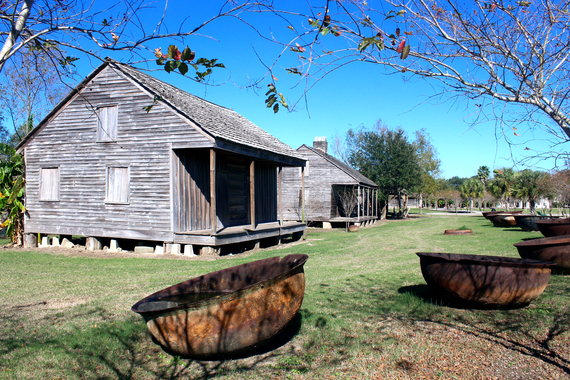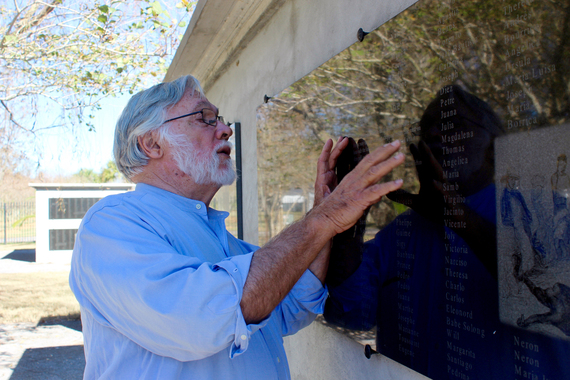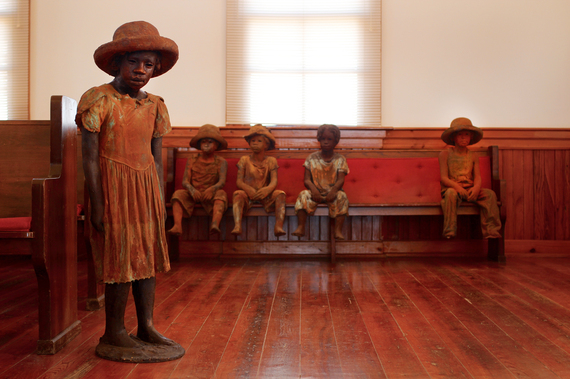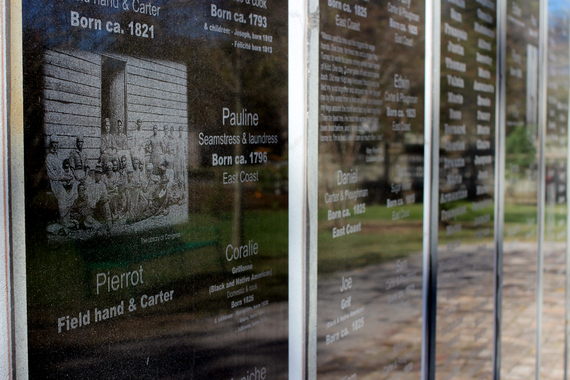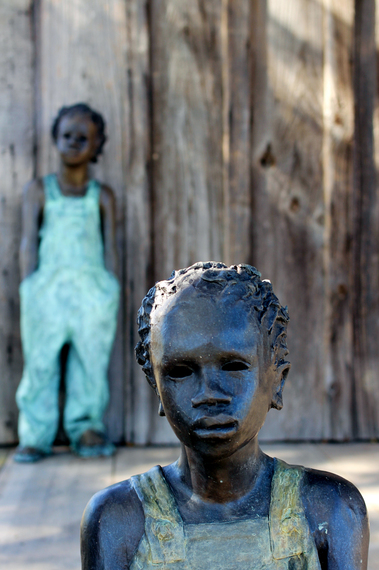This article originally appeared in the February 2016 issue of the Preservation Resource Center's Preservation in Print magazine. Photos by Liz Jurey.
When he was about 10 years old, John Cummings confronted racism in his mid-city neighborhood head on. His weapon of choice that day was a two-by-four.
"One of my best friends when I was a kid was a black woman named Liz who lived in a double on our block," Cummings said. "One of the houses there had been on Carrollton Plantation. This woman lived there, and her family had owned it for some time. She was a gardener, and she had a very nice garden."
On most afternoons after school, Cummings would help Liz work in her garden, and she would leave red-throated daisies in coffee cans on his stoop before leaving for work as a domestic servant.
Another neighbor, a retired New Orleans police officer named Reinhardt, called Cummings' mother one day to complain that Cummings was spending too much time with his gardening friend.
Only Reinhardt didn't refer to Liz by name. He used a racial slur.
"I just marched my little nine or 10-year-old self down there to his house," Cummings said. "I went up on the porch, and I had a two-by-four leaning against my back so he couldn't see it. He wouldn't open the screen door, so I took that two-by-four and I went to hit him. It went right through the screen, and he slammed that door. I guess he called my mother about that, but she didn't give me a report on the second call."
In retrospect, it's easy to pinpoint that decisive reaction to racism as the seed of what would grow into a late-in-life mission to educate the public about the realities of slavery through the internationally renowned Whitney Plantation.
But John Cummings doesn't see it that way.
"There was no white horse. There was no lightning strike or anything," he said. "I just got to the point where I couldn't be a pedestrian anymore."
The Road to Whitney Plantation
A lawyer by trade, Cummings began investing in real estate in and around New Orleans early in his career.
"Whatever Uncle Sam and the bartender let me keep, I've put it in real estate," he said.
In 1999, Cummings decided he should probably purchase a historic plantation along the Mississippi River, mostly because he felt every successful real estate developer in New Orleans should own a plantation.
The 55-acre plantation Cummings decided to buy, established by German immigrant Ambroise Heidel in 1752 and dubbed the Whitney Plantation after the Civil War, rests on a strip of land about one hour upriver from New Orleans in Wallace, Louisiana.
Heidel originally focused on indigo, but his son switched production to sugar in the early 1800s. In the late 1990s, Formosa Chemical became interested in purchasing the land to build a Rayon plant. Plans for the plant eventually fell through, but it's fair to say the eight volumes of detailed research into the land's history conducted by Formosa would eventually change the course of John Cummings' life.
"I got to the part about successions and how the ownership had been passed down," he said. "I got to the inventories of the slaves and how they had been categorized. I saw one entry where this female slave was listed as 'a good breeder.' She was a 'good breeder.'"
Cummings turned next to oral histories of slaves who had lived on the grounds of Whitney Plantation and on similar plantations running along both sides of the river.
"I was a grown man, I had degrees, and this was all new to me," he said. "This had been withheld from all of our educations. It is important for me to make sure that everybody is exposed to the facts of slavery."
Visiting the Enslaved
The first stop on the tour is not the historic main house, but the Antioch Baptist Church. Founded just after the Civil War by a group of freedmen, the historic church was originally called the "Anti-Yoke Baptist Church" to drive home the image of the newly free slaves shedding the oppressive yoke of slavery.
The church was originally located on the other side of the Mississippi River from the Whitney Plantation. After the congregation, which is still active today, moved to a bigger church about 15 years ago, the historical building was divided into three sections and hauled across the nearby Veterans Memorial Bridge before undergoing a painstaking restoration.
Rogers said many of the approximately 34,000 visitors who toured the Whitney in its first year of operation have deep connections to the church.
"There are a lot of community members that have very fond feelings about this church," she said. "I've had a tour guide who was baptized in this church. I've had people come on tours who were married in this church."
Those enduring connections to a physical historic building allow visitors to connect to the story of the people enslaved on the plantation's grounds in a very real and visceral way.
Of course, the waist-high sculptures of enslaved children scattered throughout the church also help. They serve to humanize the now-distant past while drawing into sharp focus a representation of the daily lives of the plantation's past inhabitants.
The statues, created by Ohio-based artist Woodrow Nash, depict children, enslaved from birth, in various poses. Some line a pew along the church's back wall near the main entrance, seemingly restive during a long service. Others slouch in small groups, clad in worn handspun clothing, appearing at once impossibly young and worn out by life.
One stands, eye-level to anyone seated in the first pew, imploring face craned forward, challenging anyone on the tour to ignore the reality and the myriad implications of child slaves.
The effect can be too much to bear, and it's only the first stop of the walking tour.
"People have different reactions to different things, and some people are really affected right away," Rogers said. "You usually see this kind of 'wow' effect take over when people go to the Gwendolyn Midlo Hall walkway. The memorial has the names of 107,000 people who were enslaved in Louisiana. I think when people see the scale and see all of those names, it really hits home."
Cummings said one visitor excused himself as the rest of his tour group walked along the expansive memorial to vomit in the grass.
"He just didn't know what to do," Cummings said. "He had to grieve."
Dr. Ibrahima Seck, Director of Research for the Whitney and a native of Senegal, where approximately 60 percent of Louisiana slaves were born, sees much more than names inscribed on the black granite walls of the memorial.
He sees representations of complete lives. He sees people who ate, slept, wept, laughed, cried, prayed, and tried to retain a sense of humanity within a culture structured around the commoditization of anyone born in Africa or born to African parents.
From the Whitney Plantation to Gallier Hall in Five Generations
There were 22 slave cabins on the grounds of Whitney Plantation before the Civil War. In those cabins, which were razed in the 1970s, as many as 150 to 200 slaves resided at any one time, according to Ashley Rogers, although that number fluctuated constantly in response to any number of economic stimuli.
The slave cabins that stand now on the grounds of the Whitney were transplanted from nearby plantations. The cabins serve to create a narrative of the lives of enslaved people in Louisiana. People like a slave named Victor Theophile Haydel.
Victor Haydel's mother was an enslaved woman named Anna, and his father was Antoine Haydel, a direct descendent of the plantation's founder, the family's last name having been anglicized from the original "Heidel" to "Haydel" through the generations. Though his father was a Haydel, his mother was a slave, so Victor was a slave as well.
And yet from that suffering rose greatness: Victor Haydel was the great-grandfather of prominent civil rights activist and educator Sybil Morial, who became First Lady of New Orleans when her husband Ernest N. Morial was elected as the city's first-ever African-American mayor. Their son, Marc Morial, also served two terms as Mayor of New Orleans, and is currently the president of the National Urban League.
Education is Key
For John Cummings, the only way to deal with slavery is to educate the general public about the realities of it, which he has done by inverting the typical plantation-visit experience.
"We have to use this to educate people so that they will understand what the facts of slavery were," he said. "We know that you can't rewrite history, but you can right some of the wrongs of history. The way you do it is through education."
Likening the changes in contemporary race relations to a battleship having its course changed by degree, Cummings said education is the tiny rudder making that big ship turn.
"All we need is passionate people who understand history," he said. "They have to understand history. That's the future."
Read more about the history of the Whitney Plantation on PRCNO.org.
